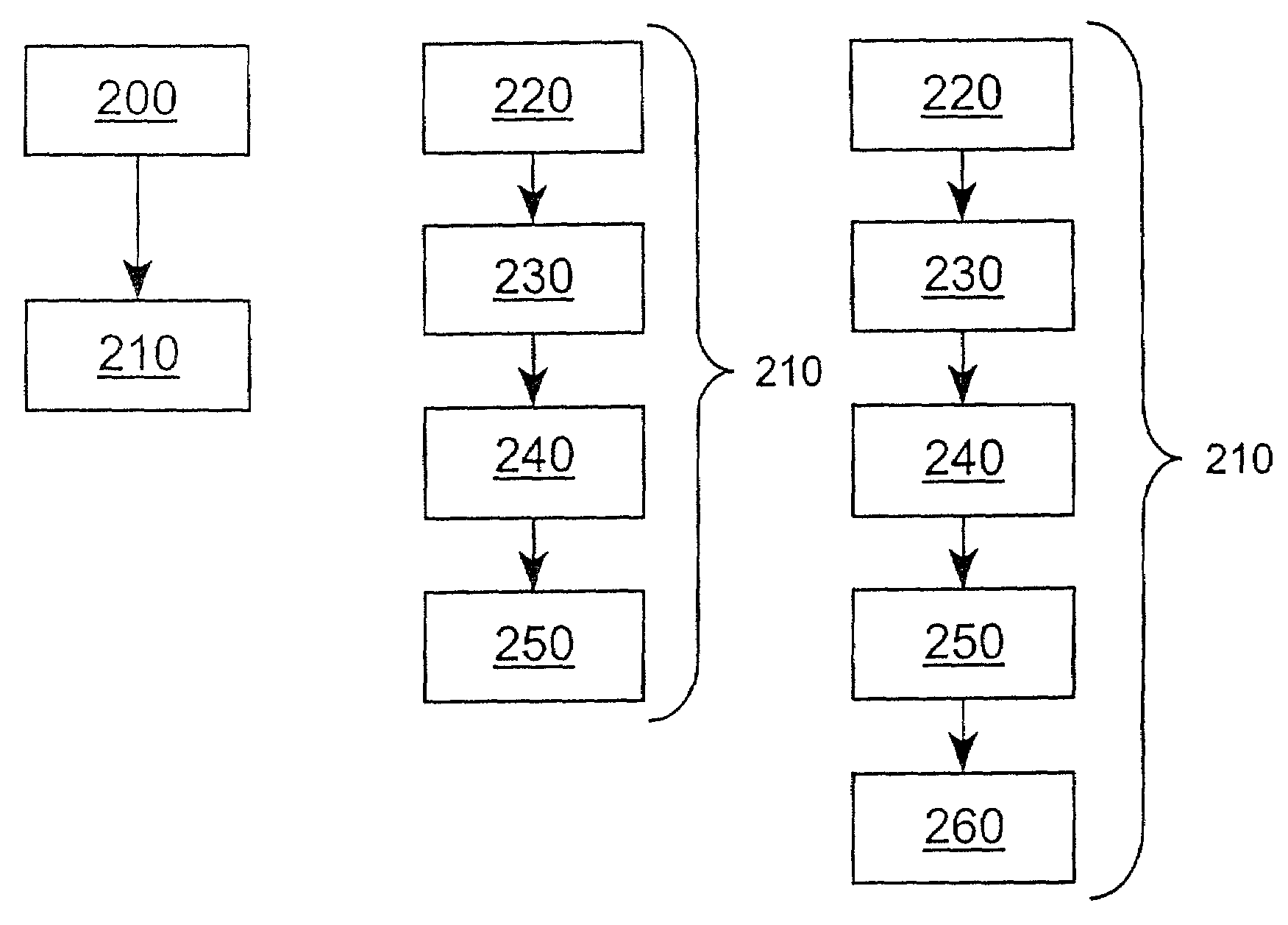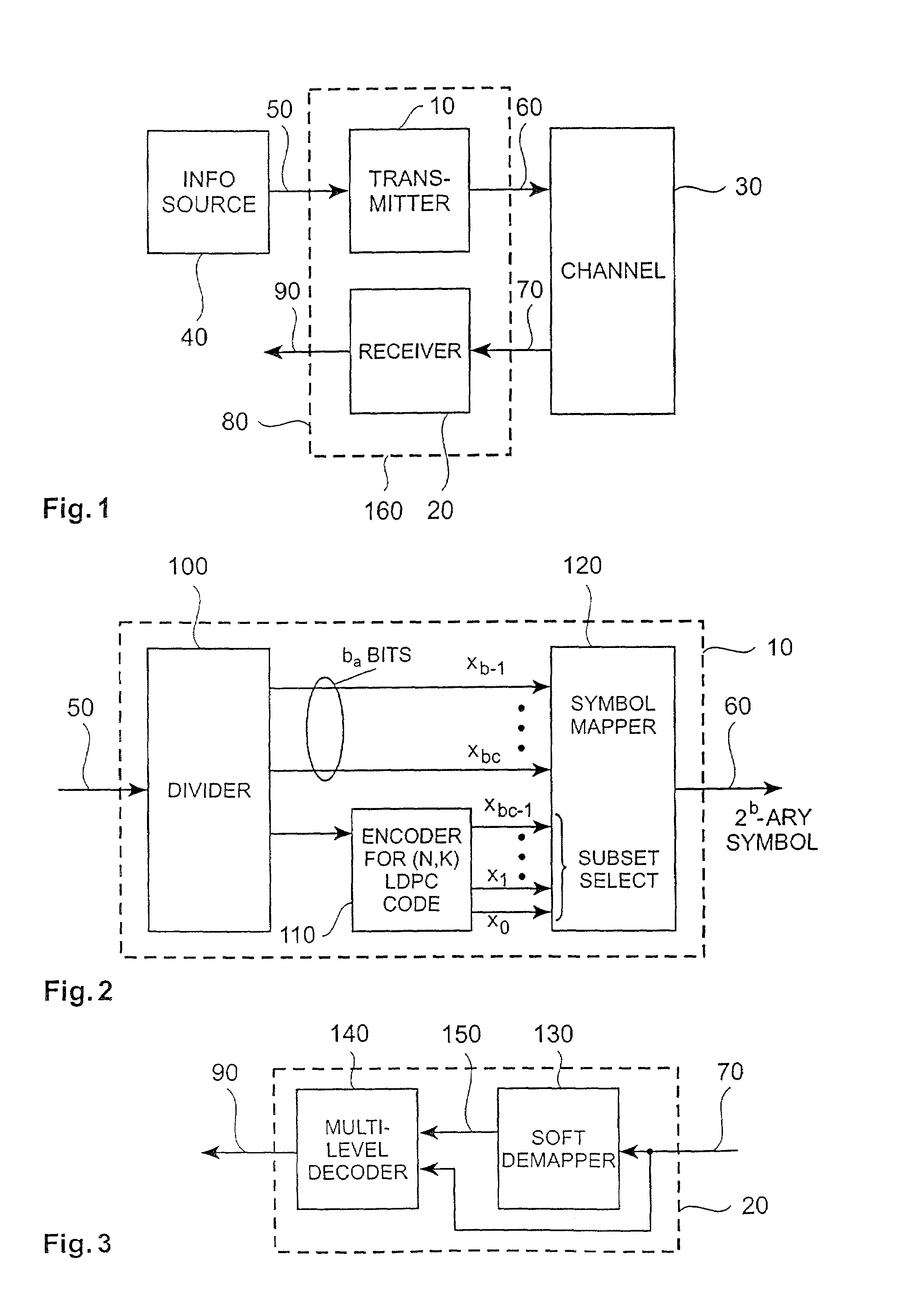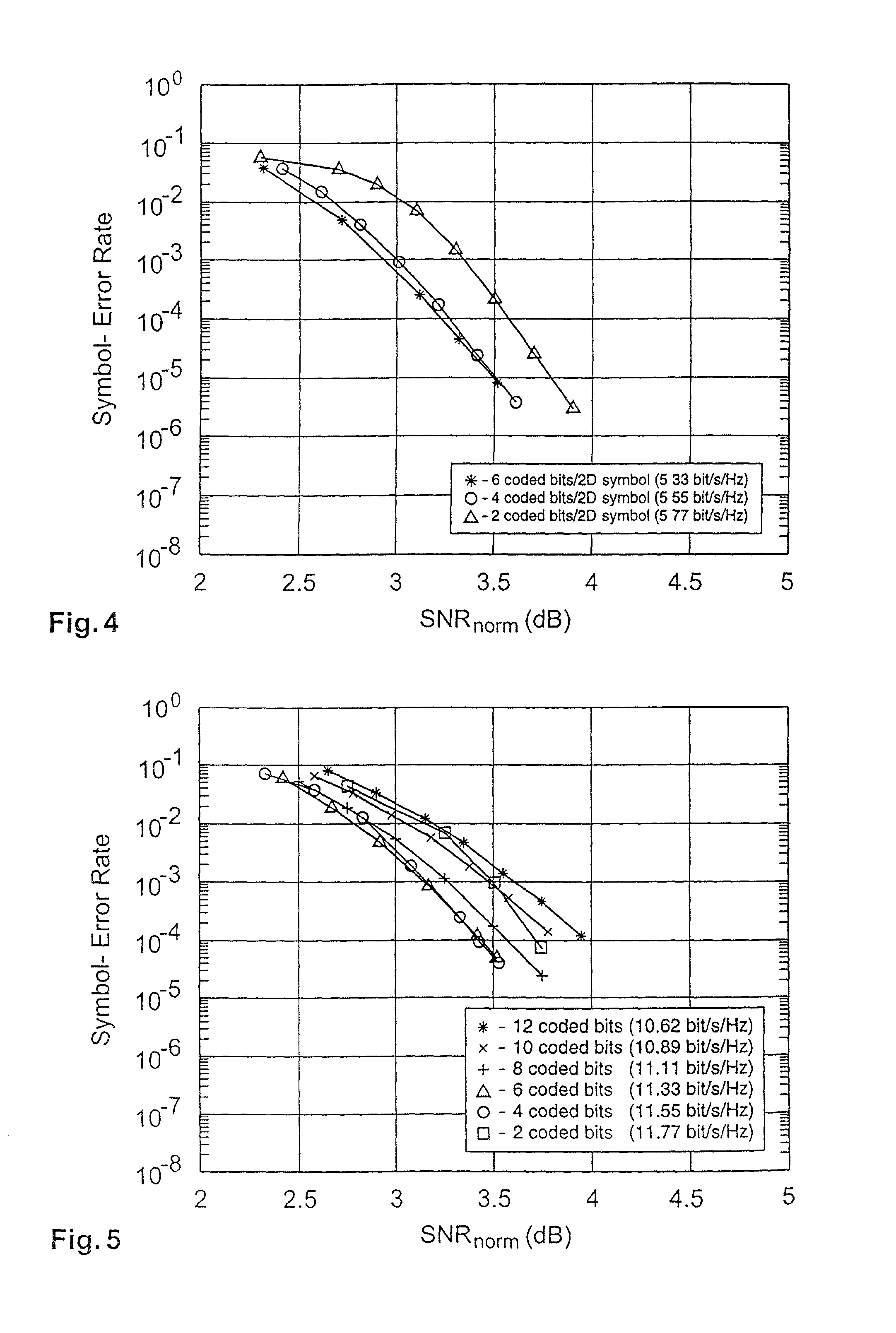Decoding low density parity check codes
a low density parity and code technology, applied in the field of decoding low density parity check (ldpc) codes, can solve the problems of unsuitable iterative decoding, difficult to achieve further improvement of signal quality at an acceptable complexity, and restricted limitations of transmit signal bandwidth
- Summary
- Abstract
- Description
- Claims
- Application Information
AI Technical Summary
Problems solved by technology
Method used
Image
Examples
Embodiment Construction
[0026]Referring first to FIG. 1, a preferred embodiment of the present invention comprises a transmitter 10 connected to a receiver 20 via a communication channel 30. In operation, the transmitter 10 receives a sequence of information bits 50 from an information source 40. The transmitter converts the information bits 50 into multilevel symbols 60 for transmission to the receiver via the communication channel 30. The multilevel symbols 60 are of a complex form having a real part and an imaginary part. The communication channel 30 introduces noise to the multilevel symbols 100 to produce a flow of noisy multilevel symbols 70 into the receiver 20. The receiver then serially recovers the information bits from the received symbols 70. The recovered information bits 80 are then supplied to a recipient system (not shown).
[0027]Referring now to FIG. 2, the transmitter 10 comprises a divider 100, a block encoder 110 and a symbol mapper 120. In operation, at each modulation instant, the divi...
PUM
 Login to View More
Login to View More Abstract
Description
Claims
Application Information
 Login to View More
Login to View More - R&D
- Intellectual Property
- Life Sciences
- Materials
- Tech Scout
- Unparalleled Data Quality
- Higher Quality Content
- 60% Fewer Hallucinations
Browse by: Latest US Patents, China's latest patents, Technical Efficacy Thesaurus, Application Domain, Technology Topic, Popular Technical Reports.
© 2025 PatSnap. All rights reserved.Legal|Privacy policy|Modern Slavery Act Transparency Statement|Sitemap|About US| Contact US: help@patsnap.com



